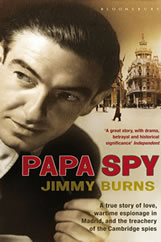Published: April 1 2007
For a military operation which its commanders felt was blessed by God and the Virgin Mary, the conquest of ‘Las Malvinas’ by the Argentine junta got off to an inauspicious start.
Around midday on 2 April 1982, the official raising of the blue and white national Argentine colours outside the Governor’s residence was interrupted when the flag got stuck halfway up the pole, snapped, and slid downwards.
Two smaller flags – representing the Argentine navy and the 25th Infantry Regiment that had formed the main invasionary force – were quickly raised in their place. But the embarrassing incident turned to farce when one of the commanding officers, General Osvaldo Garcia, ordered a young soldier to climb up the pole and rather clumsily restore the fallen emblem of national pride, having clung to the wood like a koala bear.
The British Governor of the Falklands Sir Rex Hunt and a small group of British marines had surrendered after three hours of intermittent fighting with some of the 3,000 Argentine troops who had landed as part of an advance occupation force of over 12,000.
Operation Azul – as the invasion was codenamed – had been planned with clinical precision by a military that had never fought a contemporary war but was practiced in carrying out military coups. The Junta believed that it would take over the islands as effortlessly as it had come to power in 1976. It proved a huge mislcalculation.
Then British prime minister Margaret Thatcher’s decision to send a taskforce to win back the islands won UN backing. By contrast Argentina lacked the military, political, and economic clout to secure its position through diplomatic means.
On the eve of the invasion, the Argentine president General Leopoldo Galtieri received a telephone call from US president Ronald Reagan urging restraint. Galtieri told Reagan that only if Britain agreed to recognise Argentine sovereignty over the islands immediately would he pull back his troops. “I failed to budge him,” Reagan later recalled. The US subsequently helped Britain as a Nato partner with the support of the US base on Ascension Island, military supplies and secret intelligence.
And yet despite the reality of Argentina’s diplomatic isolation, the junta used a mixture of censorship and repression to keep control of domestic opinion, organising mass rallies to intimidate its opponents and fuel nationalistic fervour. It also used elements of the Argentine Catholic church to give the occupation forces on the islands a sense of being on a moral crusade.
Operation Azul was renamed Operation Rosario. The feat of the Virgin of Rosario was established in 1573 by Pope Gregory XIII to commemorate the crushing defeat of the Turks by the troops led by Don Juan of Austria. The Argentine junta pledged that the British would suffer an equally Virgin-sent defeat.
From the moment war was declared, Argentine pilots hung rosaries round their sights before shooting their missiles at the British Task Force. Bits of Harrier jets were dedicated to another icon, the Virgin of Lujan, soldiers carried bibles to protect themselves from bullets, and military chaplains broadcast regularly to the Argentine mainland proclaiming their troops as heroes and martyrs.
Among the few Argentine dissidents to speak out was the author Jorge Luis Borges. He described Britain and Argentina fighting over a group of remote islands in the South Atlantic as being like “two bald men fighting over a comb”. Other critics, such as the human rights organisation the Mothers of May, received death threats from the junta and were accused of betraying the Argentine nation. The Mothers, parents of the thousands of Argentines who had disappeared following the 1976 coup, went on demonstrating regardless, issuing a statement at the height of the war which aimed to remind their fellow countrymen of the importance of memory: “The Malvinas are Argentine and so are the disappeared,” it said.
In 74 days the islands were liberated by the British, much to the joy of the local inhabitants. The war had cost the deaths of 255 British and 746 Argentine military, as well of three islanders, killed by ‘friendly fire’. In Buenos Aires there were riots at the gates of the presidential palace, before the military regime of General Galtieri was forced out of power, paving the way for a democratically elected government.
(c) 2008 The Financial Times Limited. All rights reserved

